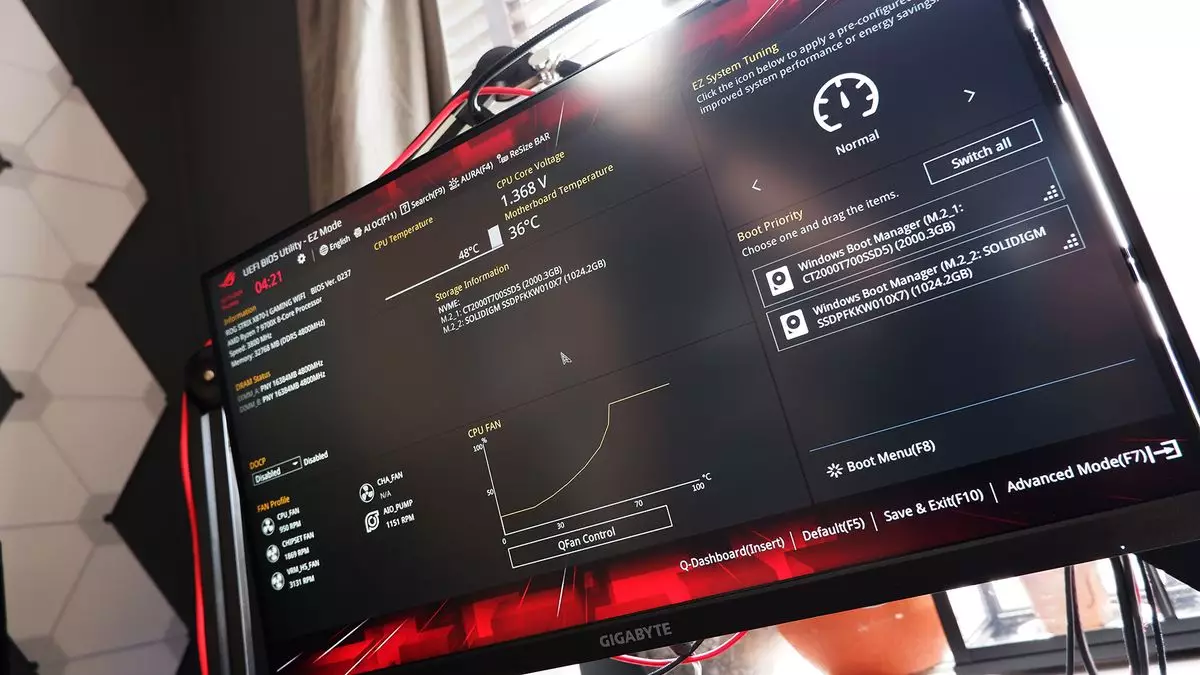In a world where technological advancements often come at a slow pace, a recent personal experience forces reflection on the state of motherboard BIOS interfaces. After assembling a new gaming PC in an impressively compact chassis utilizing Asus’ latest ROG Strix X870-I Gaming WiFi motherboard, I found myself surprised and delighted by the changes that awaited within its BIOS environment. Booting up the machine for the first time, I was greeted not only by functionality but by a visually striking interface, thanks to a resolution upgrade that marked a significant milestone.
The transition from antiquated fuzzy text to a sharp, 1920×1080 display represents more than just aesthetics; it embodies a transformation aimed at improving the user experience. It made me truly appreciate the importance of a clean and sophisticated design, making the ease of navigation and accessibility a priority.
The upgrade in resolution isn’t merely about making the BIOS look pretty; it serves practical purposes that go hand-in-hand with performance. The ability to assess numerous settings at a glance not only speeds up configuration processes but also alleviates frustration stemming from excessive scrolling and menu navigation. In an era where efficiency is paramount, Asus’ decision to elevate the BIOS experience aligns perfectly with the demands of both casual users and tech enthusiasts alike.
As I marveled at the crisp clarity of the interface, I couldn’t help but realize the tangible difference it made—especially for individuals like myself, who often utilize high-DPI mice. Previously, navigating through a low-resolution BIOS often felt cumbersome and unmanageable, creating scenarios where even simple tasks became problematic. Now, the smoother interaction with the BIOS allows for a seamless experience, streamlining what can often be a mundane aspect of PC building.
While enjoying these improvements, it’s important to admit the disheartening reality that other industry players, like MSI, have not kept pace in this aspect. Their current offerings, including the Z890 motherboards, remain simply inadequate in terms of screen resolution, exacerbating the gap in user experience even further. This discrepancy raises some questions about the focus on user-centered design within the broader industry.
On a more positive note, the competitive landscape does reveal that ASRock has managed to stay ahead of the curve with its own resolution upgrades for BIOS interfaces. This begs the question: what have users of ASRock been doing all this time? You could say they’ve been living a golden age of BIOS usability that many others are just beginning to catch up to. It highlights that the journey toward intuitive design is not just limited to Asus, but rather a clarion call for all manufacturers to reevaluate their approaches.
Reflecting on the past sheds light on why such enhancements have not come sooner. Historically, BIOS interfaces have been a mere functional component of PC building, often designed for swift input rather than user experience. However, as we move into 2024, it becomes increasingly clear that more sophisticated users are prioritizing diverse functionalities that accommodate more than just the fundamental components of computing. Aesthetic upgrades are not just welcome—they are essential for creating a fluid and engaging build experience.
While Asus may have made noteworthy strides, the rest of the industry cannot afford complacency. The learning curve for newcomers to PC-building can be intimidating, and outdated interfaces do nothing to alleviate that anxiety. Therefore, it becomes a communal responsibility—both manufacturers and users—to demand better, more approachable BIOS experiences.
The advent of high-resolution BIOS interfaces marks a pivotal change in motherboard hardware interaction. The advancements seen in Asus’ new offerings are merely the first steps in a larger evolution poised to reshape how we engage with computing architecture. With the awareness of competing options like ASRock’s offerings, it is crucial that other players in the market take notice and innovate accordingly. It’s not just about adapting; it’s about establishing superior experiences that align with modern users’ expectations—setting the tone for what lies ahead in the realm of personal computing.

